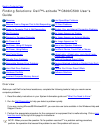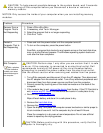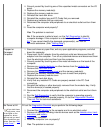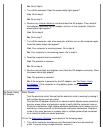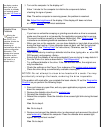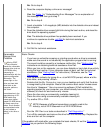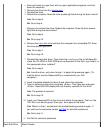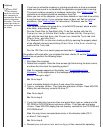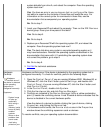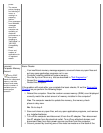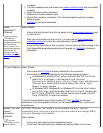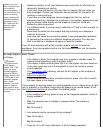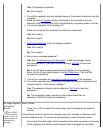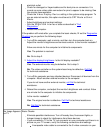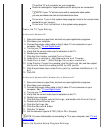
Problems
During POST,
the computer
checks the hard-disk
drive, comparing its
characteristics with the
system configuration
information. (The drive
access light blinks as
the computer performs
this check.)
If you hear an unfamiliar scraping or grinding sound when a drive is accessed,
make sure the sound is not caused by the application program that is running.
The sound could be caused by a hardware malfunction. See "Getting Help
" for
instructions on obtaining technical assistance from Dell.
When you turn on the computer, you can hear diskette or hard-disk drive activity
during the boot routine. If your computer does not boot, call Dell for technical
assistance. (See "Getting Help
" for instructions.) Otherwise, see the "Dell
Diagnostics."
Test the drive indicator by typing dir x: at an MS-DOS prompt, where x is the
drive letter, and pressing <Enter>.
Run the Check Disk (or ScanDisk) utility. To do this, double-click the My
Computer icon (or click the Start button, and then click My Computer),
right-click the hard-disk drive, click Properties, select the Tools tab, click
Check Now, and click Start.
For Windows NT®, run the error-checking utility by opening the property sheet
of the affected volume(s) and clicking Check Now in the Error-checking
section of the Tools tab.
Run the IDE Devices device group as described in "Dell Diagnostics."
If the problem still exists after you complete the basic checks, fill out the Diagnostics
Checklist as you perform the following steps:
1. Shut down the computer.
2. Reboot the computer. Does the drive access light blink during the boot routine,
and does the drive boot the operating system?
Yes. If a message appears on the display, see "Understanding Error
Messages," for an explanation of the message and possible corrective
actions. Then go to step 7.
No. Go to step 3.
3. Insert a bootable diskette into drive A and reboot the computer.
4. Type c: and press <Enter>. Then type dir and press <Enter>. Does MS-DOS
display the root directory contents for drive C?
Yes. Go to step 6.
No. Go to step 5.
5. If your hard-disk drive has more than one logical drive, type x:(where x is the
CD-ROM or DVD-ROM drive) and press <Enter>. Then type dir and press
<Enter>. Does MS-DOS display the root directory contents for the CD-ROM and
DVD-ROM drive?
Yes. You may have a corrupted boot sector or file allocation table (FAT)
on drive C. Go to step 9.
No. Go to step 8.
6. Rename your autoexec.bat and config.sys files, remove the operating



